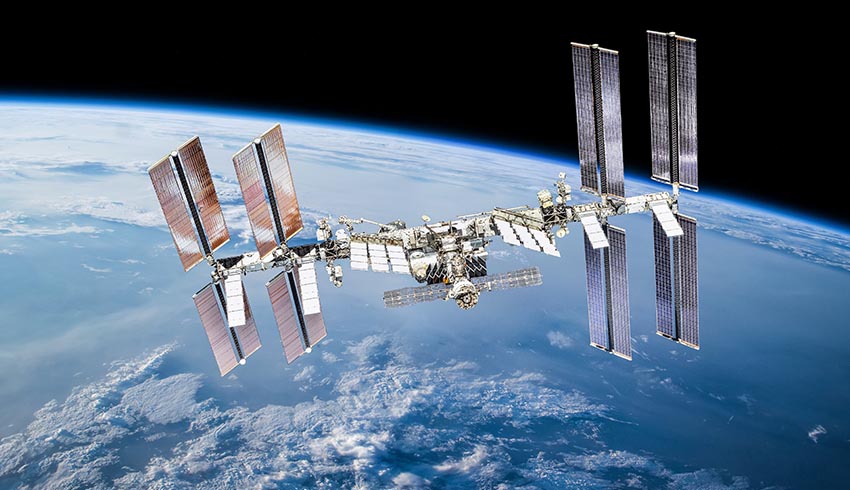On Tuesday, 24 August, Mark Vande Hei and Akihiko Hoshide from the Japan Aerospace Exploration Agency are scheduled to exit the station’s airlock at 8:30am for the mission.
The spacewalk is expected to last approximately six hours and 50 minutes, according to NASA.
The safety bracket – dubbed a ‘modification kit’ – will enable the safe installation of the third of the six new ISS Roll-Out Solar Arrays (iROSA), set to happen soon.
The iROSA draws electrical power for the sun, which is what provides partial power to the US Laboratory on the ISS, the Harmony Module and the Columbus Module.
The bracket will deploy on the inward port side of the station’s backbone truss structure in a position called P4, the closest to the station’s living space.
The kit will be attached to the master canister at the base of the original solar arrays.
Next Tuesday, Hoshide will serve as extravehicular crew member one, wearing red stripes on his suit and Vande Hei will be extravehicular crew member two with an unmarked suit.
This will mark Hoshide’s fourth spacewalk, and Vande Hei’s fifth, tallying the space station’s 242nd mission in support of maintenance and upgrades.
A replacement of the device that measures the electrical charging potential of the arrays will be installed on a separate truss, called a 'floating point measure unit',
In June, three spacewalks occurred preparing and deploying the first set of solar arrays on the ISS by NASA astronaut Shane Kimbrough and Thomas Pesquet from the European Space Agency.
The solar arrays are designed for a 15-year lifespan, and have been operating since the first ones were installed in 2000. Since then, additional pairs have been deployed in 2006, 2007 and 2009.
While the original ones are functioning well, NASA said they “have begun to show signs of degradation, which was expected”, after surpassing their 15-year life span already.
“They are now augmented with the first pair of iROSAs positioned in front of them,” NASA said in its statement.
“When all six of the new arrays are in place, the station’s total available power will increase from 160 kilowatts to a maximum of 215.”
The same solar array design will also be used to power elements of NASA’s Gateway, the new lunar-orbiting outpost being developed for the return of humans to the moon.
The moon mission – the Artemis Program – was intended to take place in 2024, but last week a report released by NASA said it would likely be delayed to the next year.
The report, written Inspector General Paul Martin detailed “significant challenges” were delaying the mission, and NASA agreed with the recommendations he put forth to get back on track.

Isabella Richards
Bella Richards is a journalist who has written for several local newspapers, her university newspaper and a tech magazine, and completed her Bachelor of Communications (Journalism) at the University of Technology Sydney in 2020. She joined Momentum Media in 2021, and has since written breaking news stories across Space Connect, Australian Aviation and World of Aviation.
You can email Bella on: [email protected]

